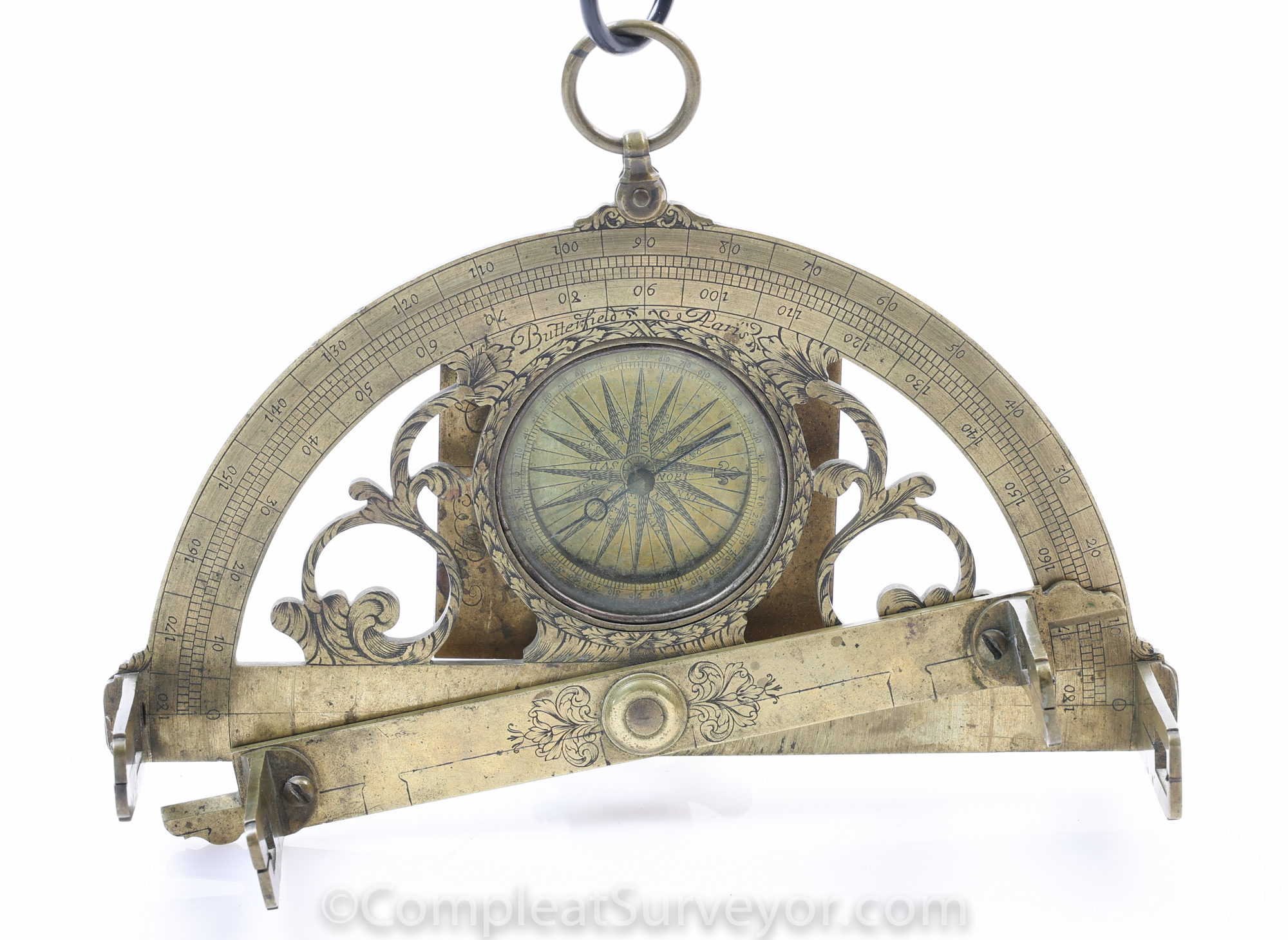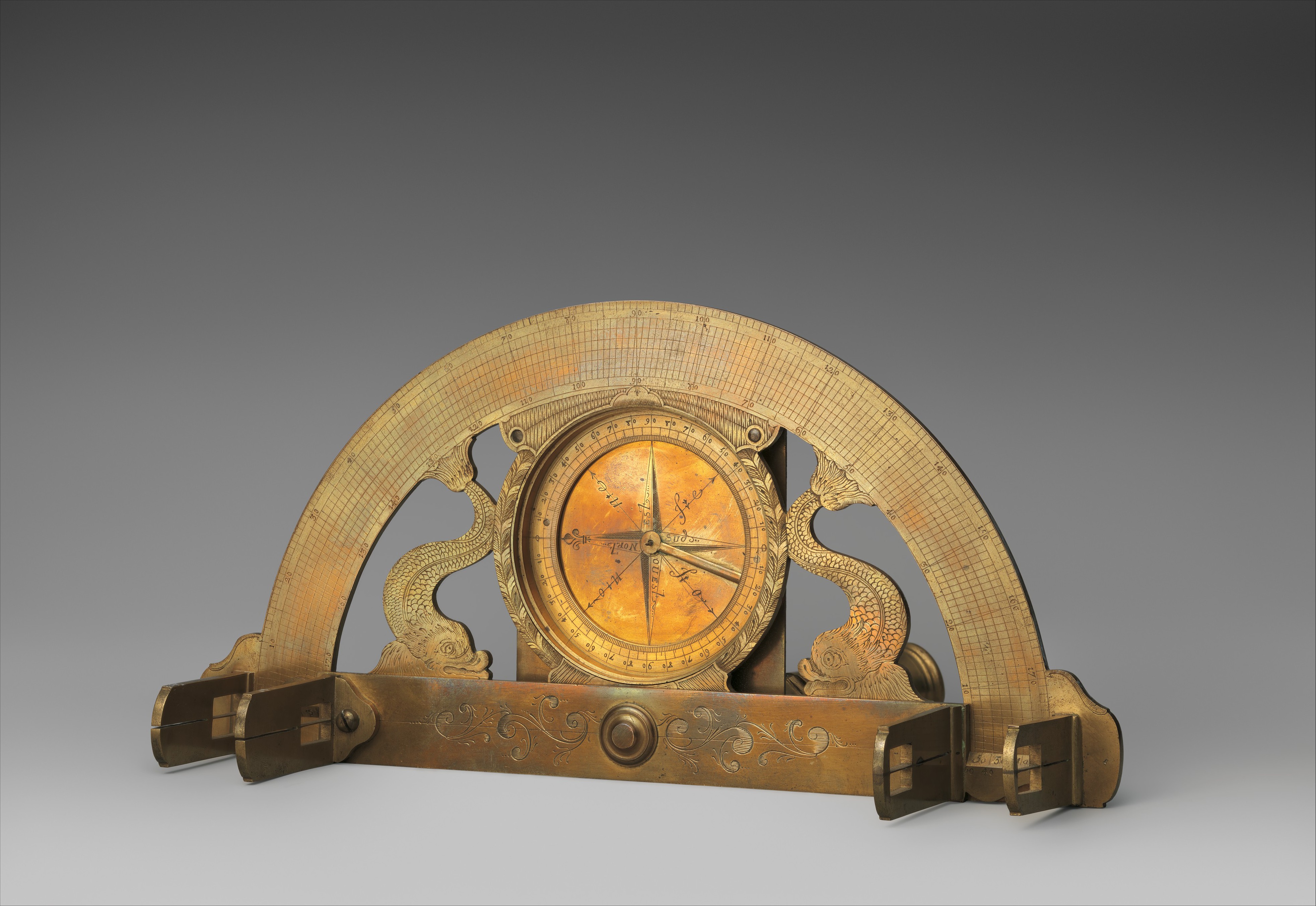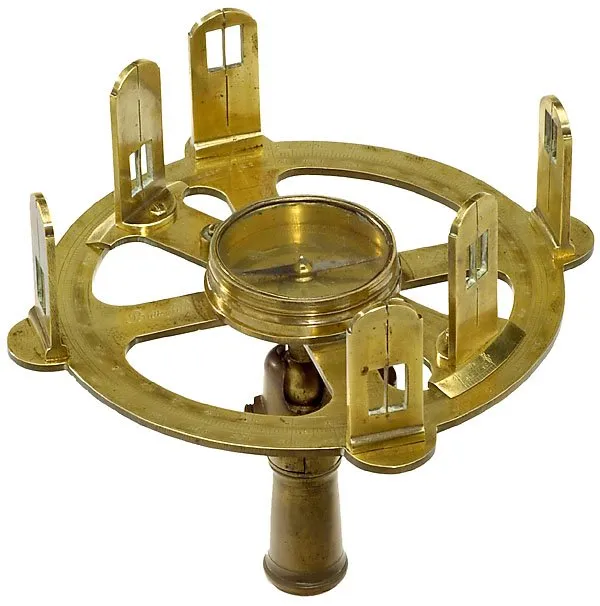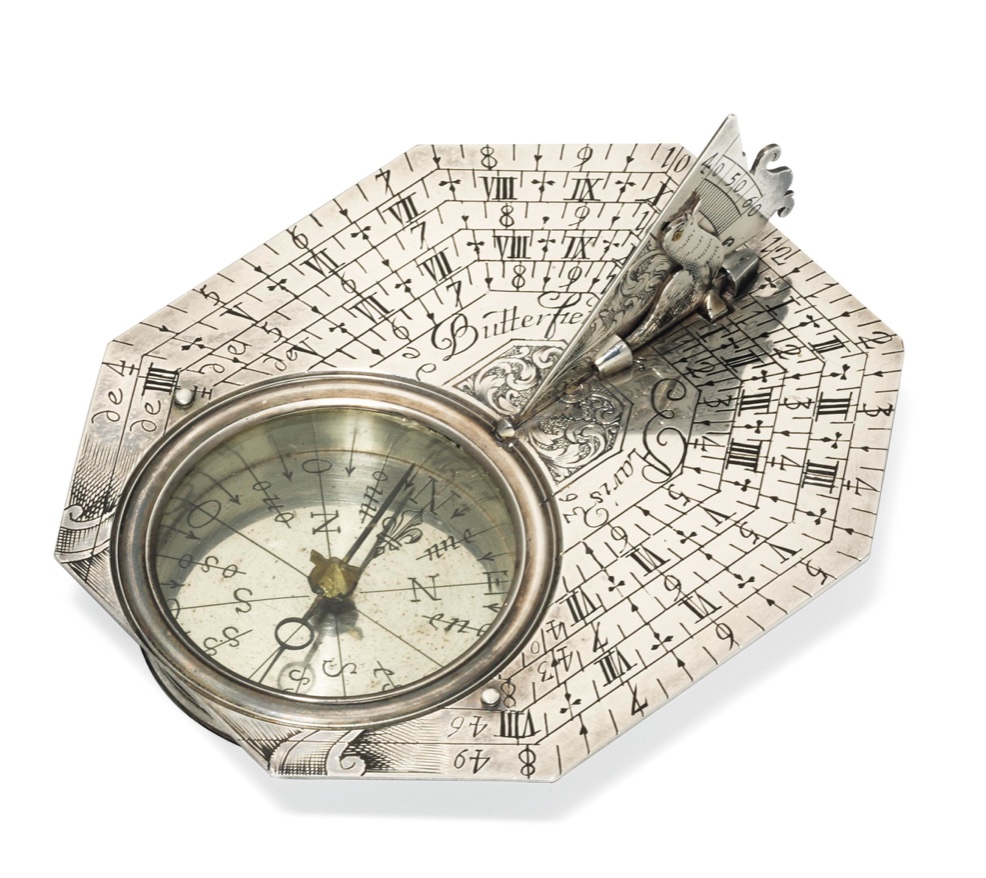
Butterfield - Paris
Michel Butterfield, born in London around 1643, was the son of the shoemaker Thomas Butterfield and Elisabeth Latonnel. He would have come in France during the year 1663 and two years later, on 15 August 1665 at the age of 22, he was presented by a certain Benoist Hankinson, squire of the city of London housed in Paris, to serve his apprenticeship with Jean Choizy, ‘maître fondeur en terre et sable et faiseur d’instruments pour les instruments de mathématiques, demeurant île du palais sur le quay du grand cours [d’eau] paroisse Saint Barthélemy’, for a period of 4 years. Jean Choizy was one of the greatest manufacturers at this time.
At the end of his apprenticeship, in August 1669, Michel Butterfield was probably employed as a mathematician journeyman (‘compagnon’) for a few years before becoming a master in the early 1670s because he obtained the French nationality on 8 April 1672.
In 1677 and 1678, Michel Butterfield published in the Journal des Sçavans, promotional leaflets on a level of a new construction. It is said that Butterfield is ‘fabricateur d’instrumens de mathématique A Paris, rüe neuve des Fossez, Fauxbourg S. Germain’ (Saint-Sulpice parish), at the sign Au Roi d’Angleterre in 1677. We note however that this sign has never been used by Butterfield on his instruments. Was it a commercial sign or the sign of his house? In 1678, when he wrote he was a great friend of Cassini and that he worked on microscopes imported by Huygens, as well as in 1681, he published leaflets on odometers. In 1680 he manufactured for the King, under the direction of Cassini, a silver planisphere that was shown at the Academy of Sciences, and to the King of England during his visit to the Paris Observatory in 1690. At the wedding of his brotherin-law Jacques Michel Vernier in 1681, he is mentioned as ‘Ingénieur du Roy en instruments de mathématique’.
Michel Butterfield died on 28 March 1724 at the age of 81
Butterfield was a prolific maker of items, and is most famous for his sun dials, some of which ended up in colonial America.
For dating Butterfield Graphometers, I was told that he engraved his name on top of the compass for 1700 and before periods. He engraved his name on the base of the Graphometer (under the alidade) for 1700 and after periods. Compare the top pic to the pic immediately below (a Graphometer owned by the NY MET).
Butterfield also used three different ways to determines angles to minutes of a degree: (1) a double ring where one ring is offset by 30 minutes from the adjacent second ring; (2) a transversal that measured to 6 minutes with multiple concentric rings (the NY MET Graphometer below); and, (3) a Vernier system where a vernier scale appeared on each end of the alidade. I believe that the Vernier system was all post-1700. I'm not sure of the timing of the Transversal system. I suspect the double ring system was the oldest system Butterfield used for dividing a degree into minutes.
Other Butterfield Instruments



© 2020 Russ Uzes/Contact Me